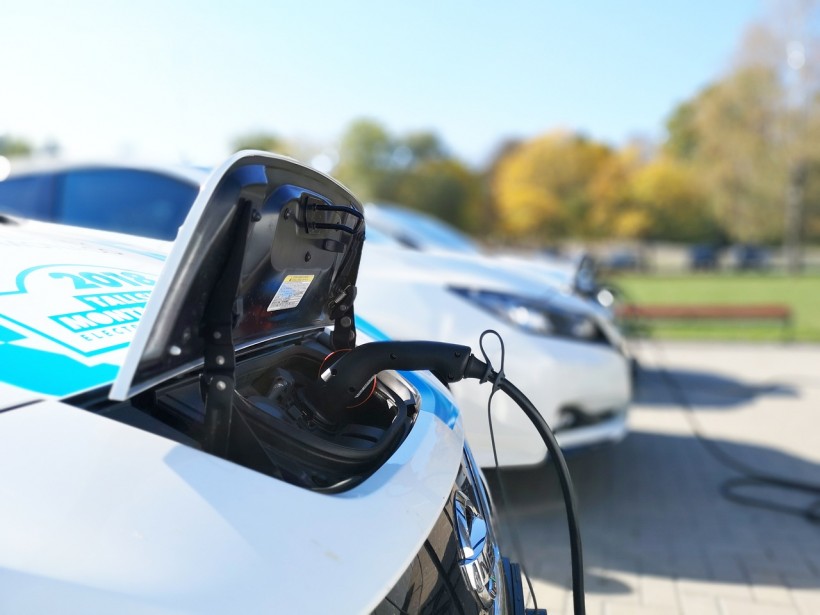The surge in demand for rechargeable lithium-ion batteries in the shift to greener energy sources is hindered by the environmental and societal costs associated with cobalt in their cathodes. Researchers at ACS Central Science are now evaluating a carbon-based cathode material that could replace cobalt and other scarce metals without sacrificing performance.
This alternative aims to address the environmental impact of cobalt extraction. Lithium-ion batteries, crucial for devices from cell phones to electric vehicles, could benefit from this sustainable solution.

MIT Develops High-Performance, Cobalt-Free Sustainable Lithium-Ion Battery
Innovating Organic Cathode for Sustainable EVs
Electric vehicles predominantly use lithium-ion batteries, with the cathodes in these batteries commonly containing cobalt, a metal known for stability and energy density. However, cobalt presents challenges due to its scarcity, volatile pricing, and associated environmental and social issues in mining.
In response, MIT researchers have devised a more sustainable lithium-ion battery with an organic-based cathode instead of cobalt or nickel. This cathode, composed of bis-tetraaminobenzoquinone (TAQ), exhibited comparable conductivity, storage capacity, and faster charging than traditional cobalt batteries.
The scarcity and mining complexities of metals like cobalt, nickel, and magnesium pose limitations to the global shift toward renewable energy. Prior attempts to develop cathodes from carbon-containing materials, such as organosulfur and carbonyl compounds, failed to match the performance and stability of traditional lithium-ion batteries.
Seeking alternatives, MIT researchers explored other carbon-based cathode materials and identified bis-tetraaminobenzoquinone (TAQ) as a promising candidate. The layered solid-state structures formed by TAQ molecules demonstrated potential competition with conventional cobalt-based cathodes.
Building on TAQ's effectiveness as a supercapacitor material, the researchers incorporated it into a cathode for lithium-ion batteries. To enhance stability and adhesion, they introduced cellulose- and rubber-containing materials.
In proof-of-concept tests, the TAQ-based composite cathode cycled safely over 2,000 times, offered higher energy density than most cobalt-based cathodes and charged-discharged in as little as six minutes.
While further testing is needed, the researchers are optimistic that these organic batteries could contribute to a global transition to renewable energy, free from cobalt and nickel, addressing environmental concerns and reducing costs associated with traditional battery manufacturing.
Researchers published the findings of their study, titled "A Layered Organic Cathode for High-Energy, Fast-Charging, and Long-Lasting Li-Ion Batteries," in ACS Publications.
Battery Challenges: Seizing Growth Amidst Uncertainty and EV Surge
Amid the uncertainty, manufacturers address battery supply challenges by building gigafactories or forming partnerships. Projected lithium-ion battery demand surge by 2030, reaching 4,500 GWh annually, driven by EVs, prompts substantial investments and competitive navigation.
Rapidly scaling new technology introduces challenges, including labor and material shortages, gigafactory construction delays, and supply chain competition. There is a risk of the battery supply chain mirroring the semiconductor chip shortage, where demand surpasses capital investment in new supply.
Additionally, environmental, social, and governance (ESG) factors are becoming more influential, introducing a new set of considerations for companies in this evolving landscape.
Despite the difficult circumstances, the situation provides substantial growth opportunities across the value chain. Companies that strategically address challenges and swiftly enter the EV battery market stand to benefit.
Three main player types emerge: incumbent battery manufacturers expanding their operations, auto OEMs entering to support EV ambitions, and smaller new entrants leveraging disruptive technologies.
RELATED ARTICLE: Sustainable, Biodegradable Battery Made From Crab Shells Might Be the Future for Renewable Energy
Check out more news and information on Battery in Science Times.




![Earth's Quasi-Moon Kamo‘oalewa Could Originate From Lunar Surface Not Asteroid Belt [Study]](https://1721181113.rsc.cdn77.org/data/thumbs/full/53275/89/56/50/40/earths-quasi-moon-kamo-oalewa-could-originate-from-lunar-surface-not-asteroid-belt-study.png)









